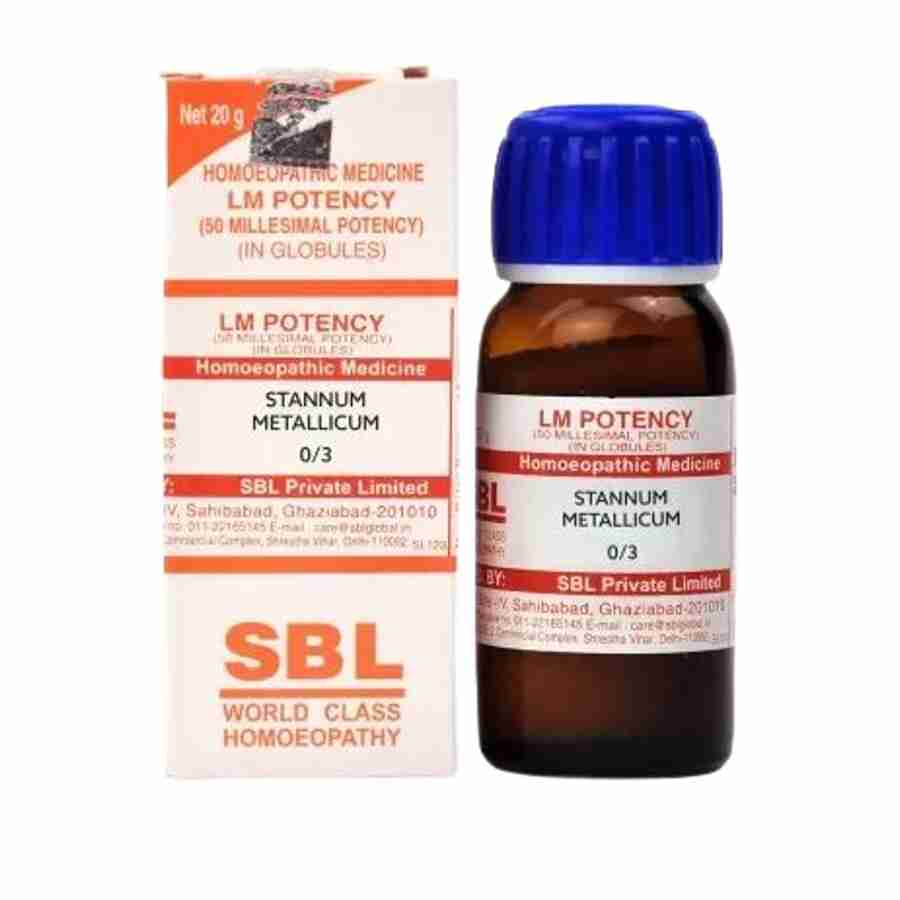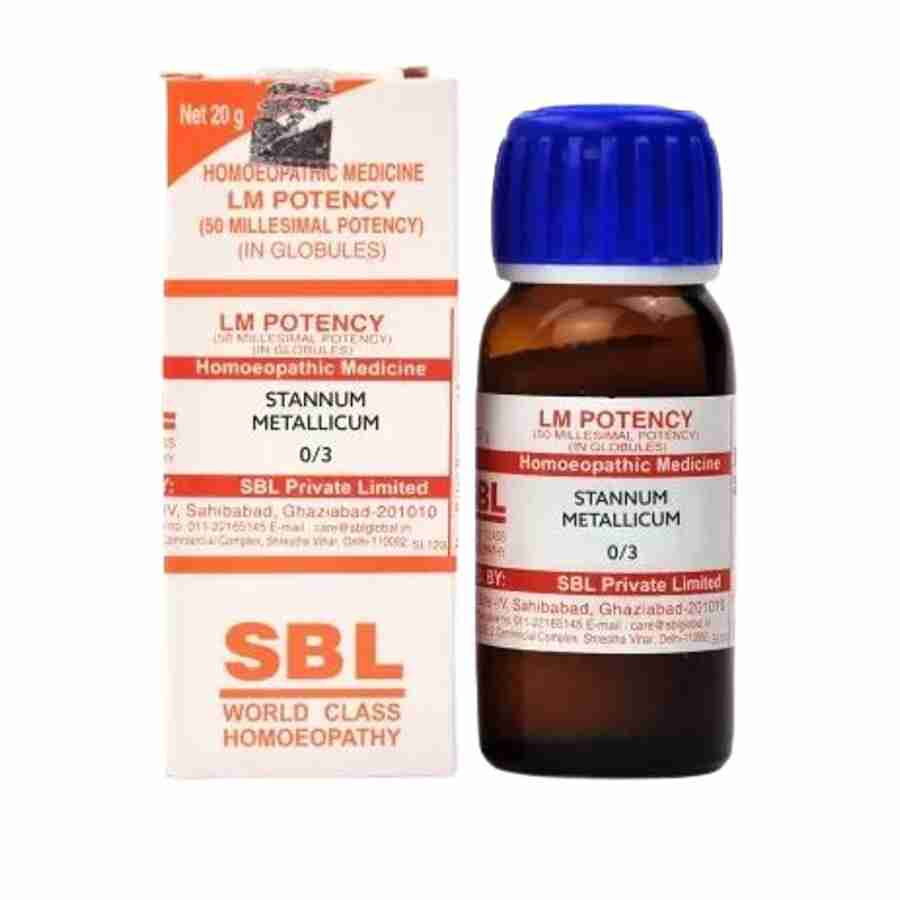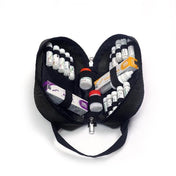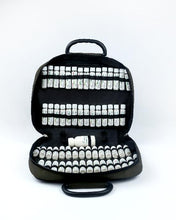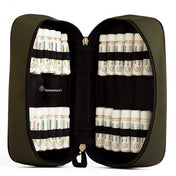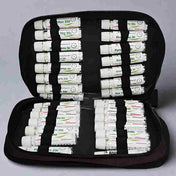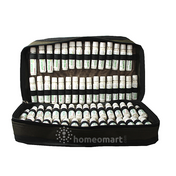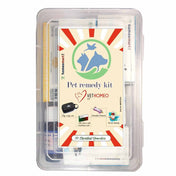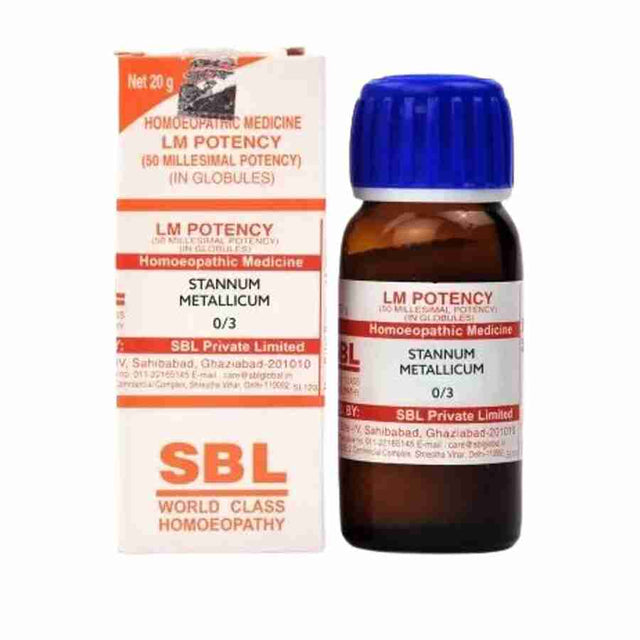Stannum metallicum LM Potency Homeopathy Dilution
Stannum metallicum LM Potency Homeopathy Dilution - 1/2 dram (1.6 Gms) / 0/1 is backordered and will ship as soon as it is back in stock.
Couldn't load pickup availability
Description
Description
For respiratory issues, Relives chest pain and soreness along with weakness, physical and mental weakness, anxiety and other disorderly thought patterns
Indications for Stannum metallicum LM Potency Homeopathy Dilution:
Stannum primarily targets the nervous and respiratory systems. It is notably effective for individuals experiencing significant debility, particularly in cases of chronic bronchial and pulmonary conditions. These conditions often present with profuse muco-purulent discharges, which may be indicative of a tuberculosis basis. A hallmark symptom is the profound weakness experienced in the throat and chest after talking. Stannum is also indicated for pains that gradually increase and decrease, suggesting a clear, identifiable need for this remedy. Additionally, it addresses paralytic weakness, spasms, and paralysis.
Mental and Emotional Symptoms
- Mind: Individuals needing Stannum often feel sad and anxious. They may experience discouragement and have a dread of social interactions, preferring to avoid seeing people.
Head Symptoms
- Head: Aching is common in the temples and forehead, particularly during episodes of acute coryza and influenza accompanied by cough. The pain worsens with motion and gradually increases and decreases, creating a sensation as if the head is constricted by a tight band. The forehead may feel pressed inward, and walking can cause painful vibrations in the head. Drawing pains in the malar bones and orbits, along with ulceration at the ringhole in the ear lobe, are also noted.
Throat Symptoms
- Throat: There is often a presence of much adhesive mucus, which is difficult to detach and causes nausea upon attempts to clear it. The throat may feel dry and sting.
Stomach Symptoms
- Stomach: Despite feeling hungry, the smell of cooking can induce vomiting. There is a bitter taste in the mouth, and stomach pain is alleviated by pressure but remains sore to the touch. A sensation of emptiness in the stomach is also common.
Abdominal Symptoms
- Abdomen: Cramp-like colic around the navel is prevalent, accompanied by a feeling of emptiness. This colic is relieved by applying hard pressure.
Female Symptoms
- Female: A bearing-down sensation and prolapsus are noted, often with a weak, sinking feeling in the stomach. Menstrual periods may be early and profuse. Pain in the vagina that radiates upward and backward to the spine is common, as well as leucorrhea associated with great debility.
Respiratory Symptoms
- Respiratory: Hoarseness and mucus expelled by a forcible cough are typical. The cough is often violent and dry, particularly in the evening until midnight. It may be triggered by laughing, singing, or talking, and worsens when lying on the right side. During the day, there may be copious green, sweetish expectoration. The chest often feels sore and weak, making it difficult to talk. Influenza-like coughs may occur from noon to midnight with scanty expectoration. Breathing is short and oppressive, with stitches in the left side when breathing or lying on the same side. Stannum is also indicated for mucous phthisis and hectic fever.
Sleep Symptoms
- Sleep: Individuals may sleep with one leg drawn up while the other is stretched out.
Extremities Symptoms
- Extremities: Paralytic weakness is common, causing individuals to drop things. Ankles may be swollen, and limbs can suddenly give out when attempting to sit down. There may be dizziness and weakness when descending. Spasmodic twitching of the muscles in the forearm and hand is also observed. Fingers may jerk when holding a pen, indicating neuritis and typewriter's paralysis.
Fever Symptoms
- Fever: Heat is prominent in the evening, accompanied by exhausting night-sweats, especially towards morning. Hectic fever is common, with perspiration mainly on the forehead and nape of the neck. The perspiration may be debilitating and have a musty or offensive odor.
Modalities
- Worse: Symptoms worsen with the use of the voice (laughing, talking, singing), lying on the right side, and consuming warm drinks.
- Better: Relief is found through coughing or expectorating and applying hard pressure.
Relationships and Comparisons
- Complementary: Pulsatilla (Puls).
-
Comparison:
- Stannum iod. 3x: Useful in chronic chest diseases with plastic tissue changes. Persistent coughing excited by a dry tickling spot in the throat, near the root of the tongue. Throat dryness, tracheal and bronchial irritation, particularly in smokers, with pulmonary symptoms like a loud, hollow cough ending with expectoration.
- Phellandrium: For pulmonary symptoms with cough.
- Causticum, Calcarea, Silicea, Tuberculinum, Bacillinum, Helonias: For related conditions and symptoms.
- Myrtus chekan: Chronic bronchitis, phthisis cough, emphysema with gastric catarrhal complications, and thick, yellow difficult sputum, especially in elderly individuals with weakened expectoration capabilities.
Dosage
- The recommended potency for Stannum ranges from the third to the thirtieth.
About LM potency homeopathy medicines
In the sixth edition of ‘Organon,’ Dr. Hahnemann introduced a new system of dilution and potentization and called it “renewed dynamisation” with a diluting ratio of 1:50,000. It was named 50 millesimal potency or LM potency by Dr. Pierre Schmidt. In some parts of the world, it is also called Q potency. It soon got professional acceptance. To date, it is recognized by different homoeopathic pharmacopoeias including American and Indian.
What are they and how are they denoted?
These homoeopathic potencies are prepared in the diluting scale of 1:50,000 and denoted as 0/1, 0/2, 0/3…..etc. They are generally used up to 0/30.
Perceived advantages
- Highest development of power at each potency level.
- Mildest reaction – no medicinal aggravation.
- Frequent repetition is permitted; every hour or often in urgent cases.
- Quick cure in chronic cases where it can be given daily or often.
- 0/3 is more subtle than 30C or 200C and the 0/30 is sharper than CM as believed by many classical homoeopaths.
LM potency dosage: Generally LM potencies are administered as follows:
- Take a 4oz (120ml) to 6oz (180ml) clean glass bottle. Fill it 3/4th with water. Take 1 or 2 globules of the desired potency (often starting at LM 0/1) and place it into the bottle.
- Succuss the bottle just before ingestion 1 to 12 times depending on the sensitivity of the patient. This slightly raises the potency and activates the remedy.
- Take 1, or more teaspoons of the medicinal solution and place it into 8 to 10 tablespoons of water in a dilution glass and stir it. Most cases are started with 1 teaspoon and the amount is increased only if necessary. In children, the amount should be 1/2 teaspoon. Infants may only need 1/4 of a teaspoon.
The dosage of the medicinal solution can be carefully adjusted to suit the sensitivity of the individual’s constitution
Note: We dispense SBL LM potency medicines in 1/2, 1 & 2 dram plastic containers, image for illustrative purposes only.

